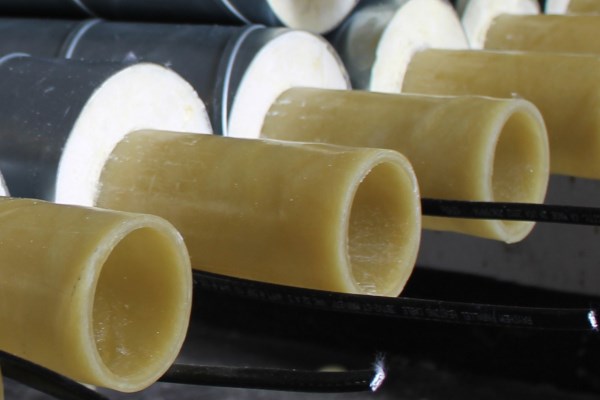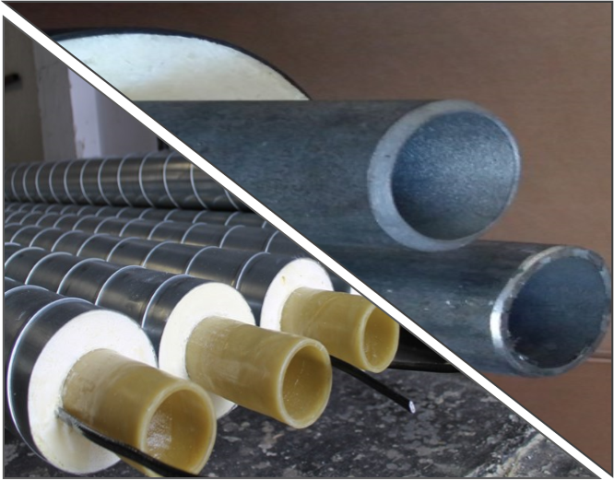TERMOTECH Duroplasty system structure
Preinsulated pipeline system components
-
composite pipes
-
composite fittings
-
connector unit
-
fasteners
-
additionally pipes, fittings and valves without preinsulation
Structure

Additional elements of the preinsulated pipeline TERMOTECH Termoplasty system:
-
electric heating cable
-
tightness monitoring
GRP conduit pipe
The main advantages of GRP conduit pipes are:
-
high chemical resistance
-
long service time
-
mechanical strength
-
low weight
-
high resistance to abrasion
-
wide range of operating temperatures

The fittings are manufactured in the process of glass mat and textile lamination, manually.
Standard production range:
-
Diameters between DN25 and DN2000
-
Pressure range between PN4 and PN40
-
Temperature range up to 120oC
The design of GRP pipelines depends on three basic pipeline parameters:
-
medium to be transported by the pipeline
-
operating pressure inside the pipeline
-
operating temperature
These parameters were taken into account during the designing of out pipe production systems. However, it is possible to produce a non-standard order at the client's request - individual selection of resins, pipeline layer thicknesses and other components to obtain required physical and chemical properties.
Thermal insulation
Insulation in the form of PUR polyurethane foam is characterized by very goos thermal insulation properties which also greatly increases composite material stiffness.
Basic parameters:
-
thermal conductivity ratio λ<0.027W/mK at 50oC
-
foam core density ρ>45kg/m3
Sleeve pipe
Depending on the type of system and user preference, 3 types of sleeve pipes are possible:
-
hard polyethylene (PE-HD) pipe of density of ρ>944kg/m3 and corona-treated internal surface meeting the requirements of PN-EN 253 standard.
-
SPIRO spiral wound pipes of galvanized sheets as per PN-81/H-92125
-
SPIRO spiral wound pipes of aluminum sheets as per PN-87/H-92833















